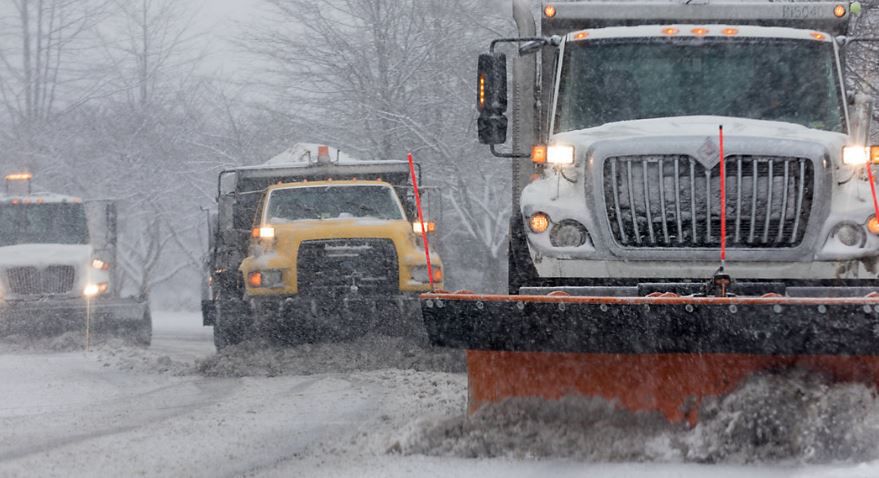We all know that road crews and plows work hard to keep roads clear and safe for drivers this time of year.
In addition to clearing snow and ice from roads, plows also put down a lot of salt on roads and other surfaces this time of year.
The usual freezing point of water – the temperature at which water freezes and becomes ice – is 32 degrees. So if there’s precipitation (snow, sleet, or freezing rain) and the ground is 32 degrees or colder, ice will form on streets and other surfaces.
So, why use salt on roads and other surfaces? It’s simple – salt lowers the freezing point of water, which prevents ice from forming.
Interesting fact: road salt is simply rock salt, which is table salt in its natural form.
The big difference is that the table salt that we use goes through a long purification process, while rock salt does not. As a result, rock salt still has impurities and that’s why it’s brownish or gray in color.
Can salt become less effective if it gets too cold? Generally, salt loses its effectiveness once the temperature falls below 15 degrees.
When temperatures are that cold, the salt simply can't get into the structure of the frozen water or ice to start the dissolving and melting process. Therefore, salt is much less effective or not effective at all when temperatures are bitterly cold.
Road crews sometimes try other methods, even beet juice.
When wintry weather hits, be careful, take your time and stay safe on the roads – especially when temperatures are cold enough to keep road treatments from doing their thing.
Our team of meteorologists dives deep into the science of weather and breaks down timely weather data and information. To view more weather and climate stories, check out our weather blogs section.
